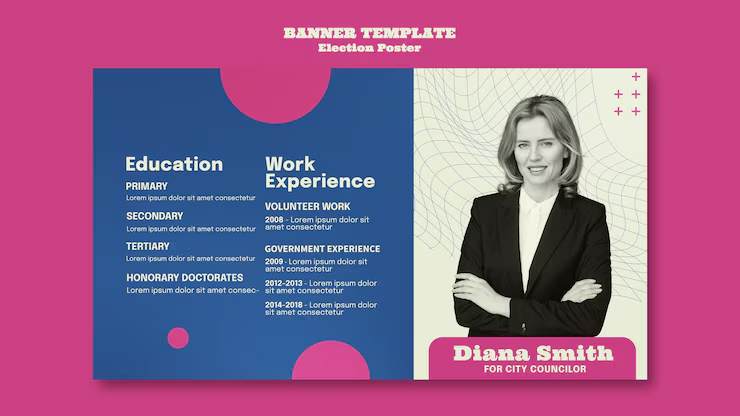Preparing for a licensing or certification exam can be overwhelming. Whether it’s a real estate license, cosmetology certification, nursing board exam, or any other regulated profession, success begins with understanding the rules and expectations. That’s where a candidate information bulletin (CIB) comes in.
The candidate information bulletin is more than just a document—it’s your roadmap. It outlines the policies, procedures, topics, scoring, and requirements you’ll encounter during the testing process. Skipping this critical resource is like taking a road trip without a map.
In this comprehensive guide, we’ll explain everything you need to know about a candidate information bulletin—what it includes, how to use it, and why it’s essential to your exam success.
What Is a Candidate Information Bulletin?
A candidate information bulletin is an official document provided by regulatory boards, exam vendors (such as PSI, Pearson VUE, Prometric), or licensing authorities to help candidates prepare for an upcoming test or examination. It provides comprehensive details about the exam format, eligibility requirements, registration process, rules on exam day, test content outline, scoring, and how to receive results.
Think of it as your personal exam prep assistant. Whether you’re taking a state licensing exam or a national certification test, the CIB is your go-to source for accurate and up-to-date exam information.
Why Is the Candidate Information Bulletin Important?
The CIB ensures transparency and fairness in the testing process. By reading it thoroughly, candidates can:
- Understand what to expect before, during, and after the exam
- Avoid mistakes in the registration or scheduling process
- Gain insight into the specific topics that will be tested
- Learn the policies and rules they must follow on exam day
- Reduce stress and uncertainty
Let’s break down each of these points to see why the CIB is not optional—it’s essential.
Contents of a Candidate Information Bulletin: What’s Inside?
Although each candidate information bulletin varies slightly depending on the exam and issuing body, most include the following sections:
1. Introduction to the Exam
This section gives an overview of the purpose of the exam and who it is intended for. It may include a brief summary of the licensing or certification process and the benefits of earning the credential.
2. Eligibility Requirements
Here you’ll find out who is allowed to take the exam. Requirements may include:
- Age limits
- Educational background
- Work experience
- Application prerequisites (e.g., fingerprinting or background checks)
3. Application and Registration Instructions
One of the most crucial sections, this part explains how to:
- Submit an application
- Pay the exam fee
- Choose a test date and location
- Confirm your registration
- Handle rescheduling or cancellations
Missing a step here can lead to delays or disqualification.
4. Exam Format and Structure
This section outlines:
- Number of questions
- Types of questions (multiple choice, essays, simulations)
- Sections or categories within the exam
- Time limit
- Break policies
It often includes sample questions to help you get familiar with the format.
5. Test Content Outline
Often seen as the “study guide” within the CIB, this section provides:
- Detailed breakdowns of exam topics
- Percentage weights for each topic
- Learning objectives and sample scenarios
This is critical for knowing what areas to focus on during your study sessions.
6. Rules and Conduct on Exam Day
Every testing facility has strict guidelines. This part includes:
- Arrival time
- Required identification
- Items you can and cannot bring
- Security procedures (e.g., fingerprinting, video surveillance)
- Rules about cheating, misconduct, and consequences
7. Scoring Information
This explains how your test will be scored, including:
- Minimum passing score
- Partial credit (if applicable)
- Weighted scoring methods
- When and how you’ll receive your results
- Retake policies if you don’t pass
8. Special Accommodations
Candidates who require testing accommodations due to disabilities or language barriers can learn how to request them in this section.
9. Post-Exam Information
This section may include:
- Certificate issuance
- Next steps in the licensing process
- Continuing education requirements
- Reinstatement procedures
How to Use the Candidate Information Bulletin Effectively
Simply reading the CIB once is not enough. Here’s how to make the most of it:
Step 1: Download the Latest Version
Always access the bulletin from the official website of your licensing board or testing provider. Check the version date to ensure it’s current.
Step 2: Highlight Key Dates and Deadlines
Use a calendar or planner to track important dates like:
- Application deadlines
- Testing windows
- Fee due dates
- Result release timelines
Step 3: Create a Study Plan Based on the Content Outline
Use the test content section to divide your study schedule into topics. Allocate more time to sections with higher percentages.
Step 4: Prepare for the Exam Day Process
Review the rules about what to bring and what to expect. Set reminders to prepare valid IDs and necessary materials in advance.
Step 5: Keep a Copy Handy
Print or save the PDF on your phone or computer. You’ll likely need to reference it multiple times throughout your exam journey.
Common Mistakes to Avoid When Using a Candidate Information Bulletin
1. Skipping Over the Details
Many candidates skim the CIB and miss critical details about eligibility or exam day conduct, leading to disqualification or missed opportunities.
2. Using Outdated Versions
Requirements and test formats can change annually. Using last year’s CIB might lead to studying outdated content.
3. Ignoring the Content Outline
The most valuable study tool is often buried mid-document. Many candidates overlook it and study irrelevant material.
4. Not Requesting Accommodations Early
Special accommodation requests can take time to process. Waiting until the last minute might make it impossible to arrange.
Where to Find a Candidate Information Bulletin
Here’s where you can typically locate the CIB for your exam:
- State Licensing Board Websites
Most professions have a board that oversees testing and licensing at the state level. - Testing Vendors (PSI, Pearson VUE, Prometric)
These companies often host downloadable CIBs for all exams they administer. - Educational Institutions
If you’re in a training program, your school may provide the CIB as part of the curriculum. - Professional Associations
National associations (e.g., National Association of Realtors, American Nurses Association) often link to relevant bulletins.
Who Needs a Candidate Information Bulletin?
The CIB is useful for anyone preparing for a high-stakes test that leads to a professional credential. Examples include:
- Real Estate Agents
- Nurses and Healthcare Professionals
- Cosmetologists and Barbers
- Accountants and Financial Planners
- Insurance Agents
- Electricians and Contractors
- Legal Professionals
Whether you’re starting a new career or renewing a license, the CIB provides clarity and direction.
Benefits of Following the Candidate Information Bulletin Closely
✅ Better Exam Readiness
Understanding what’s on the test and how it’s scored helps reduce anxiety and increase performance.
✅ Increased Efficiency
You’ll know exactly what to study and what to ignore, saving time and energy.
✅ Professionalism
Showing up prepared, with all necessary materials and documentation, sets a professional tone for your career journey.
✅ Higher Pass Rates
Statistically, candidates who study based on the official test outline have a significantly higher first-time pass rate.
Frequently Asked Questions
Q: Is the candidate information bulletin the same for all states or provinces?
A: No. It varies depending on the governing body and location. Always download the version specific to your exam and jurisdiction.
Q: Do I have to pay for the CIB?
A: No. It’s a free resource provided by licensing authorities or test providers.
Q: Can I bring the CIB with me to the exam?
A: No. Most testing centers prohibit any printed material. Use it to prepare beforehand.
Q: How often should I review the CIB?
A: At least three times—when you begin studying, a week before the exam, and the night before.
Final Thoughts
The candidate information bulletin is not just a technical manual—it’s your exam preparation blueprint. It provides every detail needed to help you succeed, from the moment you register to the moment you receive your results.
Whether you’re taking a real estate exam, nursing boards, or an electrician licensing test, your first step should always be downloading and studying the CIB. It’s free, it’s reliable, and it’s written specifically to help you pass.




